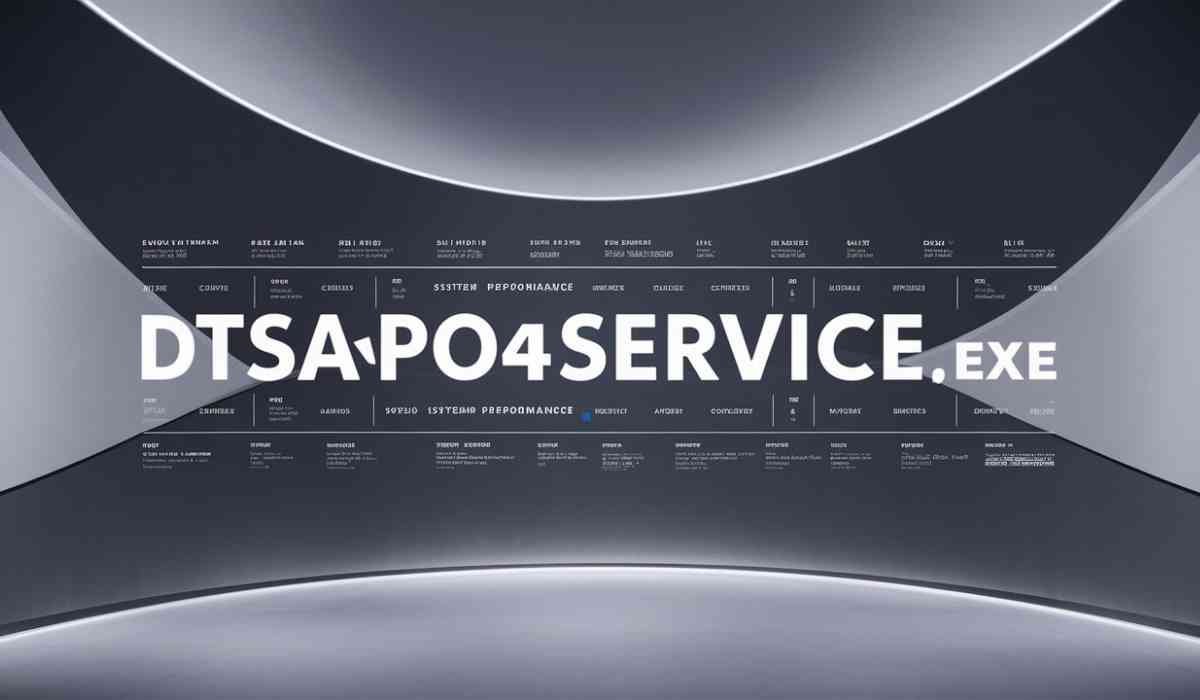For audiophiles and Windows users seeking superior sound quality, dtsapo4service.exe plays a crucial role.
This executable file, associated with the DTS Audio Processing Object Service, delivers advanced audio enhancements.
However, high memory usage by dtsapo4service.exe can lead to system slowdowns and frustration.
This comprehensive guide empowers users of all levels to optimize dtsapo4service.exe, ensuring smooth system performance and exceptional audio experiences.
Understanding Dtsapo4service.Exe: The Power Behind Enhanced Audio

dtsapo4service.exe is an integral component of the DTS Sound software suite. It operates in the background, leveraging sophisticated audio processing techniques to elevate your audio output.
Imagine experiencing richer bass, crisper dialogue, and a wider soundscape – that’s the power of dtsapo4service.exe.
However, it’s essential to acknowledge the potential for increased memory consumption, which we’ll address in the following sections.
Common Causes of High Memory Usage and Their Impact
Several factors can contribute to dtsapo4service.exe consuming excessive memory resources:
- Outdated Software: Running an older version of the DTS software can lead to compatibility issues and inefficient memory management.
- Software Conflicts: Incompatibility with other software or drivers can cause dtsapo4service.exe to demand more memory than necessary.
- Background Processes: When numerous background processes are running simultaneously, dtsapo4service.exe might compete for available memory, leading to performance bottlenecks.
These issues can manifest as system sluggishness, application crashes, and overall frustration. By understanding the root causes,
We can implement effective solutions to optimize memory usage and unleash the full potential of dtsapo4service.exe.
Advanced Strategies For Memory Optimization: A Step-By-Step Guide

Here’s a roadmap for optimizing memory usage and mitigating the impact of dtsapo4service.exe:
- Update DTS Sound Software
Ensure you’re utilizing the latest version of the DTS software. Visit the official website or your computer manufacturer’s support page to download and install the most recent update.
This often includes performance improvements and bug fixes that can address memory management issues. - Disable Dtsapo4service.Exe From Startup (Optional)
If the audio enhancements are not critical for your daily tasks, consider disabling dtsapo4service.exe from automatically running at startup.
Access the Task Manager, navigate to the Startup tab, and right-click on dtsapo4service.exe to select “Disable.”Remember, this will prevent the audio enhancements from being active unless you manually launch the service. - Perform A Malware Scan
Malicious software can sometimes disguise itself as legitimate processes, leading to high memory consumption.
Regularly scan your system with a reputable antivirus program to identify and remove any potential threats that might be impacting dtsapo4service.exe’s memory usage. - Reinstall DTS Sound Software (Last Resort)
If the aforementioned solutions fail to resolve the issue, consider reinstalling the DTS Sound software entirely.
This can sometimes address corrupted files or improper installations that might be contributing to memory usage problems.
Uninstall the existing software, restart your computer, and then download and install the latest version from the official source.
Practical Solutions And Troubleshooting Tips for All Users
Here are some additional practical tips to address high memory usage by dtsapo4service.exe:
- Update Windows and Drivers: Keeping your Windows operating system and device drivers up to date can often resolve compatibility issues that might be causing memory problems with dtsapo4service.exe.
- Monitor Memory Usage: Utilize the Task Manager to monitor memory usage. This can help you identify other processes that might be consuming excessive resources alongside dtsapo4service.exe.
- Consider Hardware Limitations: If your system has limited RAM (Random Access Memory), it might struggle to handle resource-intensive applications or services like dtsapo4service.exe. Upgrading your RAM could be a solution in extreme cases.
Engaging with Your Audio Experience: A Look At Advanced Features (Optional)

For advanced users who crave a deeper understanding, this section can explore features like configuring audio profiles within the DTS Audio Control Panel.
This allows for customization of audio enhancements based on your preferences (e.g., music, movies, games).
Conclusion
By following the strategies outlined in this guide, you can effectively optimize dtsapo4service.exe, ensuring a smooth-running system and exceptional audio experiences.
Remember, striking a balance between audio quality and system performance is key. For casual users, disabling dtsapo4service.exe from startup might be a viable option.
However, audiophiles might prefer to keep it active for the enhanced.
FAQs
Is disabling dtsapo4service.exe safe? (Yes/No)
Yes, but it will disable the audio enhancements.
Will updating dtsapo4service.exe fix high memory usage? (Yes/No/Maybe)
Maybe. Updating can improve memory management and address bugs, potentially reducing memory usage.
How can I tell if dtsapo4service.exe is malware?
Check the file location (usually C:\Windows\System32\DTS\PC\APO4x). If it’s in a different location, scan your system with antivirus software.
Will upgrading my RAM fix dtsapo4service.exe memory issues?
Yes, if your current RAM is limited. More RAM allows the system to handle resource-intensive applications more efficiently.
What are some alternative audio enhancement options?
Your sound card or motherboard manufacturer might offer audio enhancement software. Additionally, some media players have built-in audio EQ (equalizer) features.
Does dtsapo4service.exe affect audio quality when disabled? (Yes/No)
No, disabling it won’t affect the base audio quality. However, you’ll miss out on the additional enhancements like surround sound or bass boost.
Can outdated audio drivers contribute to dtsapo4service.exe issues? (Yes/No/Maybe)
Maybe. Outdated drivers might not be compatible with the latest version of dtsapo4service.exe, potentially causing conflicts or instability.
Is there a way to configure the level of audio enhancement by dtsapo4service.exe? (Yes/No/Maybe)
Maybe. Some versions of the DTS software might offer a control panel where you can adjust the level of audio enhancement or choose specific profiles (e.g., music, movies).
Are there any performance benefits to disabling dtsapo4service.exe besides reduced memory usage? (Yes/No/Maybe)
Maybe. Disabling it can potentially free up some system resources (CPU usage), but the impact might be negligible on modern systems.
What are some alternative solutions for users who don’t want to disable dtsapo4service.exe?
Consider closing unnecessary background programs that might be competing for resources. Additionally, some users report success by adjusting virtual memory settings (advanced user option).




